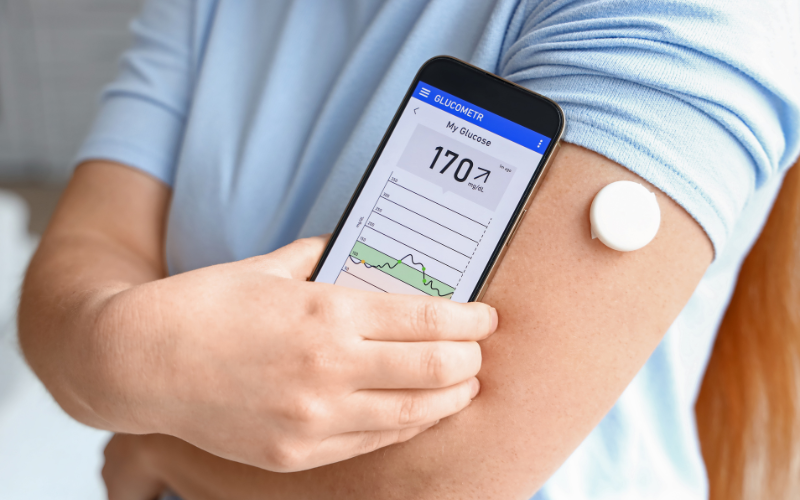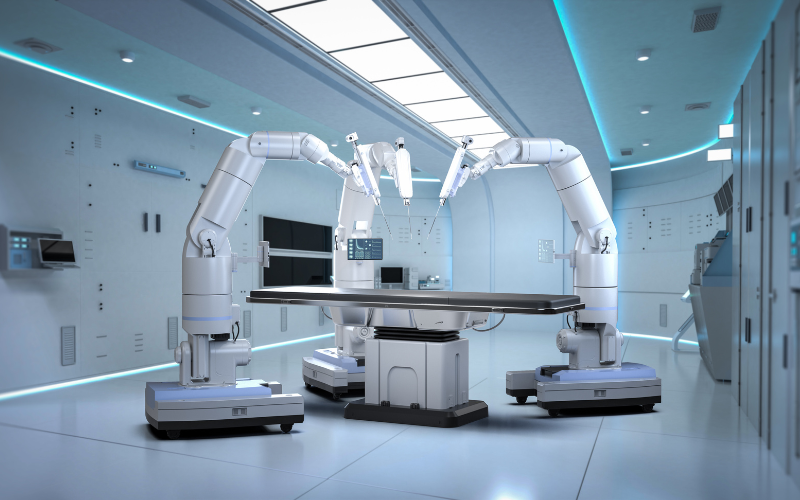Precision Nutrition: Using Data to Optimize Diabetes Diets

Since being diagnosed with diabetes, one might feel like a detective, constantly searching for clues and solving puzzles. It can take years of trial and error to find the right meal plans, blood sugar management strategies, and ways to cope mentally with the disease. Struggles with burnout and frustration are common. However, new self-monitoring technologies are promising to change that. Instead of manually logging habits and adjustments, devices can now track meals, exercise, insulin, and blood sugar levels.
For instance, the Dexcom G7 is a compact CGM system that eliminates the need for fingersticks. It sends real-time data to a smartwatch or smartphone, providing continuous updates on blood sugar levels. Diabetes devices, such as insulin smart pens, CGMs, wearables, and food-tracking apps, facilitate informed decision-making by collecting extensive data, enabling tailored diabetes treatments.
Real-Time Insight and Feedback
Diabetes management has undergone a revolution. In 1977, insulin treatments primarily involved animal-derived insulin, which lacked purity. NPH, Lente, or PZI insulins were used, and taking more than one injection was considered advanced. Traditional methods like blood glucose meters, urine testing, and symptom monitoring provided limited insight, offering only snapshots of glucose levels rather than continuous data.
Modern technologies like CGMs and wearables now provide precise, timely information essential for effective diabetes treatment. These devices and apps offer valuable insights into how different foods and activities affect glucose levels, enabling adjustments to meals and the development of personalized nutrition strategies. Studies show that using CGMs for real-time insights is linked to better glycemic parameters, especially for younger people who can make timely interventions and stay engaged with their treatment.
Identifying Glucose Patterns and Triggers
Old diabetes monitoring techniques were limited in detecting glucose patterns and triggers. Glucometers only show blood sugar levels at the moment of testing, not over time, making it difficult to identify patterns. Urine testing is even less effective, as urine test strips lack sensitivity to detect small changes in glucose levels.
Research indicates that urine glucose test strips have a sensitivity of 14%, meaning they correctly identify only a small portion of individuals with diabetes, though they have a high specificity of 99%, correctly identifying those without diabetes. However, they failed to detect 201 individuals with diabetes while incorrectly identifying 7 individuals without diabetes.
Devices like the Dexcom G7 provide more than just current glucose levels—they offer trend analysis, indicating the direction and speed of glucose changes. This helps users understand whether glucose levels are rising, falling, or remaining stable. For example, skipping breakfast might lead to a significant blood sugar spike, while just 10 minutes of walking after a meal can significantly lower glucose levels.
Tailoring Diabetes Meal Plans and Recommendations
Meal planning is crucial for diabetes management. By selecting the right types of food, portion sizes, and carbohydrate intake, individuals can prevent blood sugar highs and lows, reduce the risk of complications, and promote better glycemic control. However, there is no one-size-fits-all diet for diabetes, as people have different metabolic profiles, food preferences, cultural backgrounds, and lifestyles.
Data storage and visualization help identify which diets and foods work best for one's current health state. Apps can provide interesting recipes, enhance personalized care, and support the effective optimization of diabetes diets. Continuous monitoring allows for progress tracking and adjustments as needed.
Improving Self-Awareness
Diabetes devices simplify the regulation of sugar and insulin levels with features that can significantly improve daily management. From pumps and smart insulin pens to CGMs and apps, a wide range of products are available. Knowledge is power in diabetes management—the more one learns about their response to food, stress, disease, and exercise, the better they can control their diabetes over time.
Using data and visualization fosters self-awareness, helping individuals understand their condition on a deeper level and improve their overall health outcomes. Studies show that people using devices that provide feedback, such as alerts, step counts, trends, reminders, and glucose levels, have increased awareness and self-management. They can learn to adopt specific health behaviors and understand the intricate connection between stress and blood sugar.
Conclusion
Diabetes technologies have advanced significantly, allowing for personalized nutrition and treatment plans based on collected data. As these devices continue to improve, they will become even more accurate and helpful in promoting healthy lives for individuals with diabetes.



